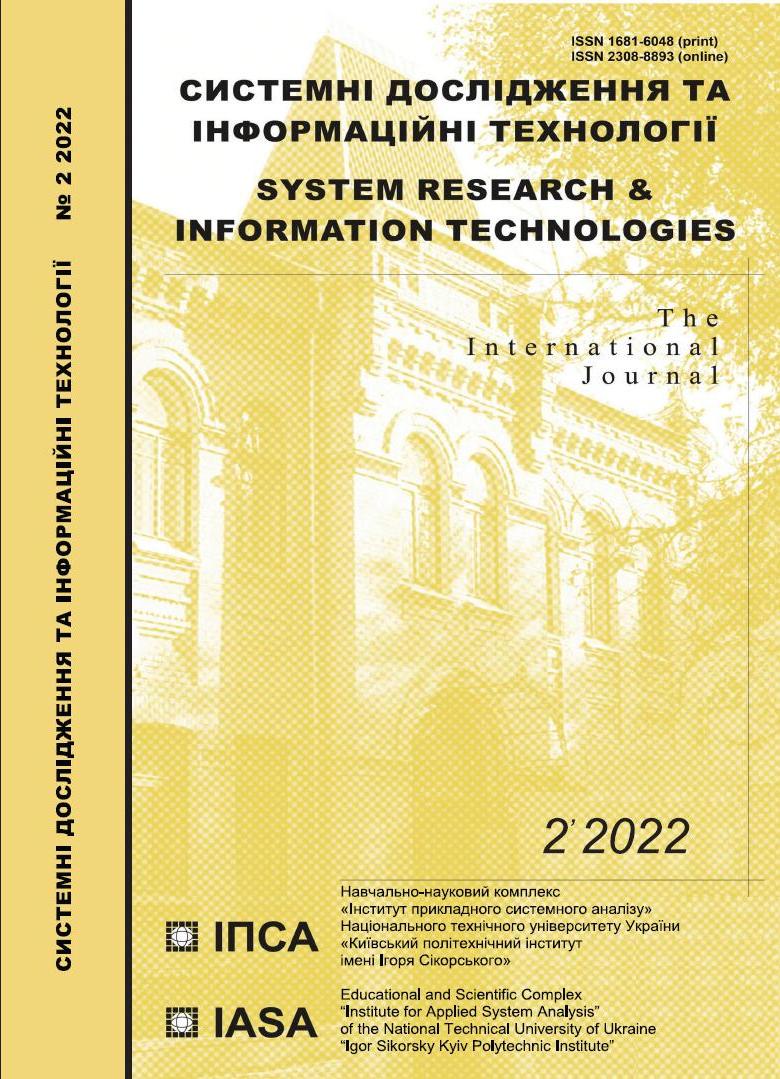Expert system for depression detection in teenagers
DOI:
https://doi.org/10.20535/SRIT.2308-8893.2022.2.12Keywords:
certainty factor, depression, detection, expert system, teenagersAbstract
Depression (major depressive disorder) is a common and serious medical illness that negatively affects how you feel, think, and act. Fortunately, it is treatable. Depression causes sadness and/or a loss of interest in activities once enjoyed. It can lead to various emotional and physical problems and decrease a person’s ability to function at work and home. Teenagers often experience this disorder because their emotions are still unstable. They also don’t have many chances to consult with a psychologist and doctor. Through this research, an expert system was created that implements knowledge from experts related to depression so that teenagers can do a self-test when needed. The expert system was developed using the Certainty Factor method for the knowledge inference engine. The system was tested iteratively and could achieve similar results with a domain expert. We hope that the system can detect early symptoms of depression among teenagers and minimize the negative impact it may cause.
References
L. Mandasari and D. L. Tobing, “Tingkat Depresi dengan Ide Bunuh Diri pada Remaja”, J. Keperawatan, vol. 2, no. 1, pp. 1–7, 2020.
K. Dianovinina, “Depresi pada Remaja: Gejala dan Permasalahannya”, J. Psikogenes, vol. 6, no. 1, pp. 69–78, 2018. doi: 10.24854/jps.v6i1.634.
M.K. Jasmir, S. Kom, “Rancangan Sistem Pakar Dengan Metode Forward Chaining Dan Heteroassocoative Memory Untuk Mendeteksi Tingkat Depresi Seseorang”, J. Process. STIKOM Din. Bangsa-Jambi, vol. 6, no. 1, pp. 1–17, 2011.
M. Dahria, “Pengembangan Sistem Pakar Dalam Membangun Suatu Aplikasi”, J. Saintikom, vol. 10, no. 3, pp. 199–205, 2011.
S. Mulyani, Metode Analisis dan Perancangan Sistem; 1st ed. Bandung: Abdi Sistematika, 2016.
Z. Ereiz and D. Music, “Scrum Without a Scrum Master”, 2019 IEEE Int. Conf. Comput. Sci. Educ. Informatiz. CSEI 2019, pp. 325–328, 2019. doi: 10.1109/CSEI47661.2019.8938877.
A. Perdana, “Apa Itu Scrum Master? Simak Pengertian, Peran, dan Skill-nya di Sinitle”, glints.com, 2021.
N. Garzaniti, S. Briatore, C. Fortin, and A. Golkar, “Effectiveness of the Scrum Methodology for Agile Development of Space Hardware”, IEEE Aerosp. Conf. Proc., vol. 2019-March, pp. 1–8, 2019. doi: 10.1109/AERO.2019.8741892.
A. Dirgayunita, “Depresi: Ciri, Penyebab dan Penangannya”, J. An-Nafs Kaji. Penelit. Psikol., vol. 1, no. 1, pp. 1–14, 2016. doi: 10.33367/psi.v1i1.235.
J.A. Widians, M. Wati, and J. Juriah, “Aplikasi Sistem Pakar Tingkat Depresi pada Remaja Menggunakan Certainty Factor”, in Seminar Nasional Teknologi Informasi dan Multimedia 2017, pp. 1–6. [Online]. Available: https://ojs.amikom.ac.id/index.php/semnasteknomedia/article/view/1851/1574.
E.H. Shortliffe and B.G. Buchanan, “A model of inexact reasoning in medicine”, Math. Biosci., vol. 23, no. 3–4, pp. 351–379, 1975. doi: 10.1016/0025-5564(75)90047-4.
R.A. Widyatama and S. Hansun, “Expert System for Chili Plants Disease Detection using Certainty Factor Method”, Int. J. Innov. Technol. Explor. Eng., vol. 9, no. 1, pp. 1145–1151, 2019. doi: 10.35940/ijitee.A4440.119119.
D. Heckerman, “The Certainty-Factor Model,” in Encyclopedia of Artificial Intelligence, 1992, pp. 131–138.
S. Sumiati, H. Saragih, T. Abdul Rahman, and A. Triayudi, “Expert system for heart disease based on electrocardiogram data using certainty factor with multiple rule”, IAES Int. J. Artif. Intell., vol. 10, no. 1, pp. 43–50, 2021. doi: 10.11591/ijai.v10.i1.pp43-50.
S.D. Putra, M.B. Ulum, and D. Aryani, “Expert System for Diagnosis of Uterine Myomas using the Certainty Factor Method”, Int. J. Eng. Sci. Inf. Technol., vol. 1, no. 4, pp. 103–108, 2021. doi: 10.52088/ijesty.v1i4.177.
N.D. Wirasbawa, M.D.R. Wibawanto, A. Kosasi, and S. Hansun, “Scalable Building Management System for Offices and Co-Working Spaces”, Indian J. Econ. Bus., vol. 20, no. 2, pp. 451–461, 2021. [Online]. Available: http://www.ashwinanokha.com/resources/ijeb v20-2-30.Ijeb.pdf.
A.B. Hamilton and E.P. Finley, “Qualitative methods in implementation research: An introduction”, Psychiatry Res., vol. 280, p. 112516, 2019. doi: 10.1016/j.psychres.2019.112516.
J.W. Moore and L.M. Quintero, “Comparing forward and backward chaining in teaching Olympic weightlifting”, J. Appl. Behav. Anal., vol. 52, no. 1, pp. 50–59, 2019. doi: 10.1002/jaba.517.
M. Toseef and M.J. Khan, “An intelligent mobile application for diagnosis of crop diseases in Pakistan using fuzzy inference system”, Comput. Electron. Agric., vol. 153, pp. 1–11, 2018. doi: 10.1016/j.compag.2018.07.034.
S. Hansun and J.C. Young, “Predicting LQ45 Financial Sector Indices using RNN-LSTM”, J. Big Data, vol. 8, no. 1, p. 104, 2021. doi: 10.1186/s40537-021-00495-x.

